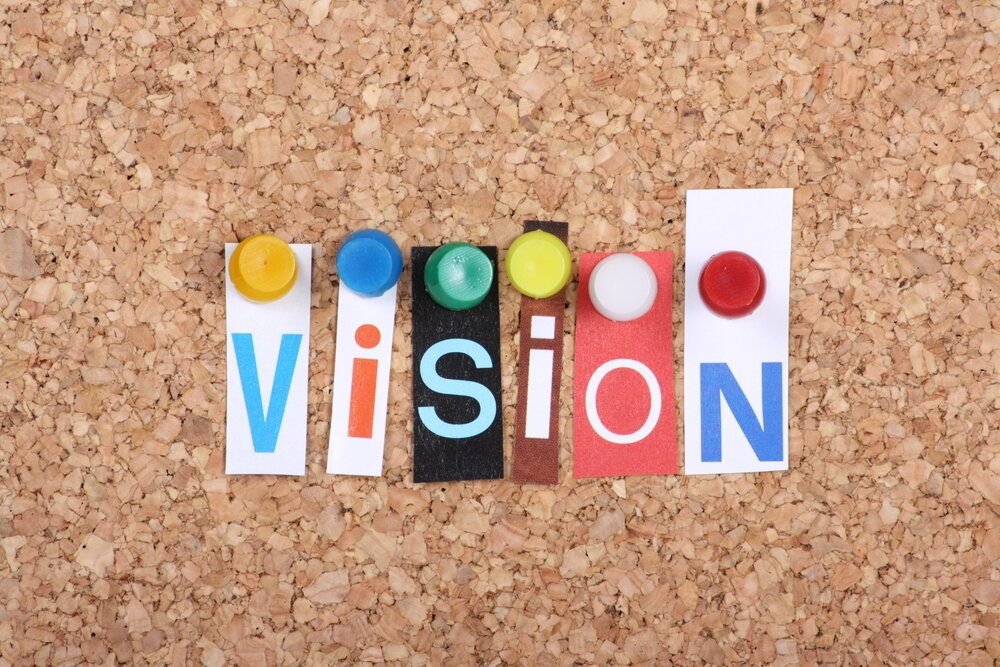
“I have been impressed with the urgency of doing. Knowing is not enough; we must apply. Being willing is not enough; we must do.” —Leonardo da Vinci
We’ve heard how vision boards help people achieve their dreams. Successful people like Oprah Winfrey, Steve Harvey, Katy Perry, and Ellen DeGeneres all swear by their vision boards. The big question is, will it work for you?
Do Vision Boards Work?
The answer is not a simple yes or no because the helpfulness of a vision board depends on the person using it. You can create an amazing vision board, and it might not help you at all. Why is that? Because vision requires action.
A vision board is simply that, a board that reminds you of your vision, mission, and goals. Anything beyond that is up to you. Your vision board may even contain specific steps on how to achieve success. However, if you don’t follow through with those steps, moving forward is a challenge.
Bear in mind that vision boards are only roadmaps. You’re still the one traversing that road. Hence, the success of using a vision board depends on whether you’re taking action or not. If you are following through, then a vision board will be a very helpful tool for you.
Possible Issues with Vision Boards
You may hear people say that vision boards don’t work for them. There’s a science behind why vision boards don’t work for everyone. Here are the possible issues that people encounter:
1. Lack of Growth
Psychotherapist Amy Morin shared that she’s seen too many clients don’t experience personal growth when using vision boards. What happens is they create their vision boards only to wait for the universe to fulfill their vision. She even shared that one of her male clients kept envisioning his future owning a sports car, having a hot girlfriend, and a mansion. This guy believed that if he kept visualizing, that his vision would become a reality on its own. (1)
2. Increased Chances of Failure
Some people who create vision boards get stuck in thinking about the goals. They obsess over their goals and don’t spend enough time thinking about the steps they must take to achieve those goals. The result? Increased chances of failure.
A study compared process vs outcome-based mental simulations. (2) A group of freshmen college students was asked to visualize getting good grades on their midterms and another group visualized their study habits before the exam. The visualization started five to seven days before the midterms. The result showed that the group who visualized getting good grades scored lower. Meanwhile, the other group scored better because they prepared more for the test.
3. Less Effort
A study was done on how positive fantasies decrease energy spent to make those fantasies a reality. It could have the opposite effect. Instead of becoming more motivated in achieving a goal, you’d have less desire to do so.
How to Make Vision Boards Work for You?

To avoid the possible pitfalls mentioned above, turn your vision board into an action board instead. Pinning images of your wishes is not enough. Your vision board should contain your plan on how to make those wishes a reality. It won’t be the universe doing the work; it’s you who will. Here are some tips to make your vision board actionable:
- Visualize the steps you need to achieve your goals. Write them down so you have a specific guideline. Make the steps doable and attainable.
- Focus on your desires and not anyone’s. Ask yourself what it is you really want to achieve in life. Who do you want to be in the future? How do you want to be remembered?
- Vision boards aren’t for wishes or fantasies only. You can also add things you want to change in your life if there are areas lacking. For example, are you spending less time with the family because of work? If so, one of your goals can be carving out more quality time with them.
- Having goals on your vision board is great, putting too much can be overwhelming. Only add the ones you want to focus on and prioritize. You can also break down bigger goals into smaller ones to make them more manageable.
- Add quotes that inspire you to take action and commit to the realization of your goals.
- Answer the “why’s.” Why do you want to achieve this goal? Why do you want this to happen? This way, when you look at your vision board, it also reminds you of your purpose and that will keep you motivated.
There’s no point in making a vision board that looks like artwork. Make one that resonates with you – that’s the only thing that matters. Vision boards are tools; success depends on the steps you take. Vision boards can work if you have the right mindset. Remember always that positive thinking is great, and adding relevant actions will really help to create the future you seek.
Sources: